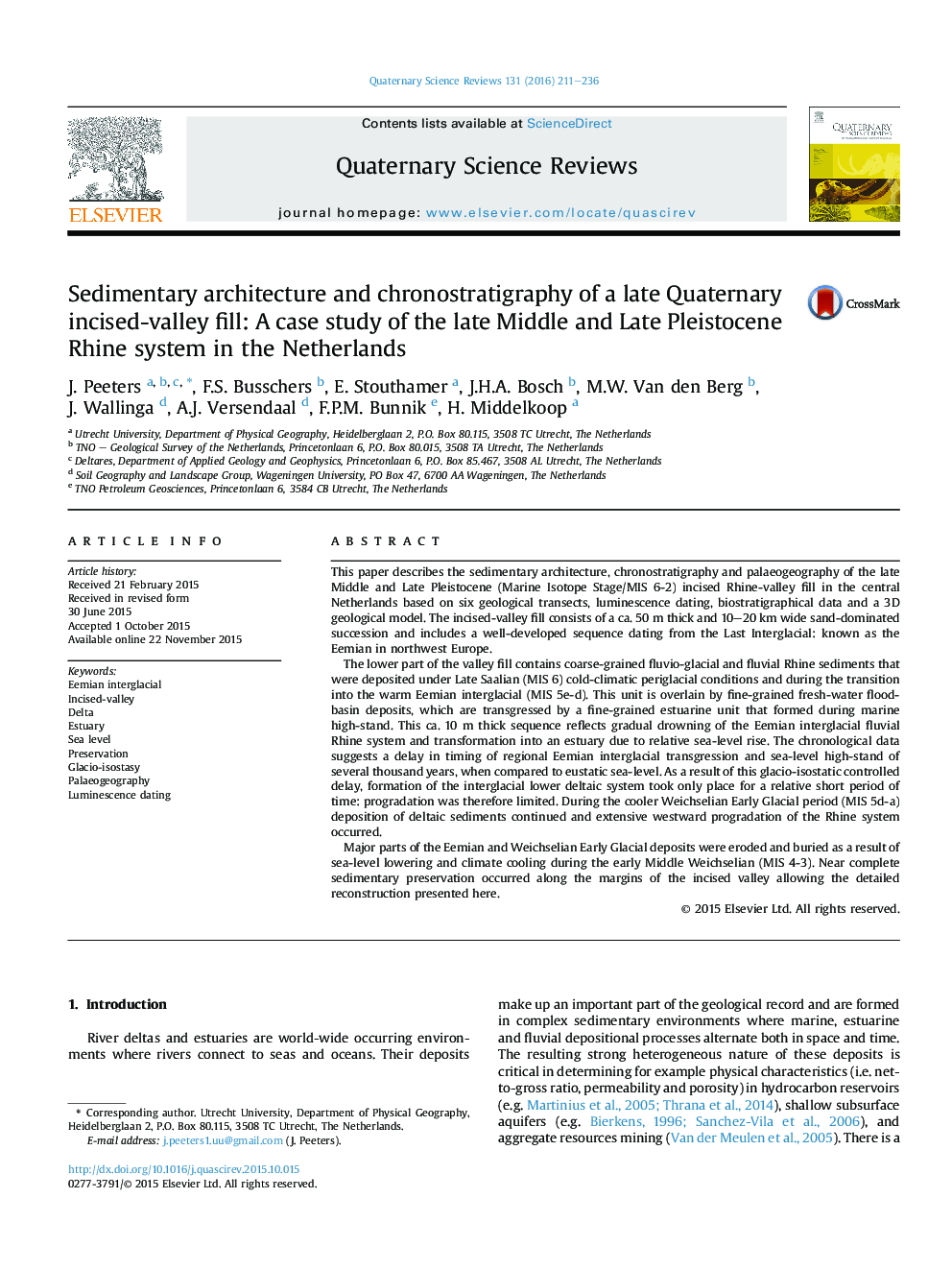| Article ID | Journal | Published Year | Pages | File Type |
|---|---|---|---|---|
| 4735762 | Quaternary Science Reviews | 2016 | 26 Pages |
•The Rhine formed a 50 m thick incised-valley fill during the late Quaternary.•The valley fill includes fine-grained deltaic sediments of Last Interglacial age.•Timing and volume of deltaic deposition was strongly controlled by glacio-isostasy.•Complete preservation of deltaic sediments is highest along incised-valley margins.
This paper describes the sedimentary architecture, chronostratigraphy and palaeogeography of the late Middle and Late Pleistocene (Marine Isotope Stage/MIS 6-2) incised Rhine-valley fill in the central Netherlands based on six geological transects, luminescence dating, biostratigraphical data and a 3D geological model. The incised-valley fill consists of a ca. 50 m thick and 10–20 km wide sand-dominated succession and includes a well-developed sequence dating from the Last Interglacial: known as the Eemian in northwest Europe.The lower part of the valley fill contains coarse-grained fluvio-glacial and fluvial Rhine sediments that were deposited under Late Saalian (MIS 6) cold-climatic periglacial conditions and during the transition into the warm Eemian interglacial (MIS 5e-d). This unit is overlain by fine-grained fresh-water flood-basin deposits, which are transgressed by a fine-grained estuarine unit that formed during marine high-stand. This ca. 10 m thick sequence reflects gradual drowning of the Eemian interglacial fluvial Rhine system and transformation into an estuary due to relative sea-level rise. The chronological data suggests a delay in timing of regional Eemian interglacial transgression and sea-level high-stand of several thousand years, when compared to eustatic sea-level. As a result of this glacio-isostatic controlled delay, formation of the interglacial lower deltaic system took only place for a relative short period of time: progradation was therefore limited. During the cooler Weichselian Early Glacial period (MIS 5d-a) deposition of deltaic sediments continued and extensive westward progradation of the Rhine system occurred.Major parts of the Eemian and Weichselian Early Glacial deposits were eroded and buried as a result of sea-level lowering and climate cooling during the early Middle Weichselian (MIS 4-3). Near complete sedimentary preservation occurred along the margins of the incised valley allowing the detailed reconstruction presented here.
